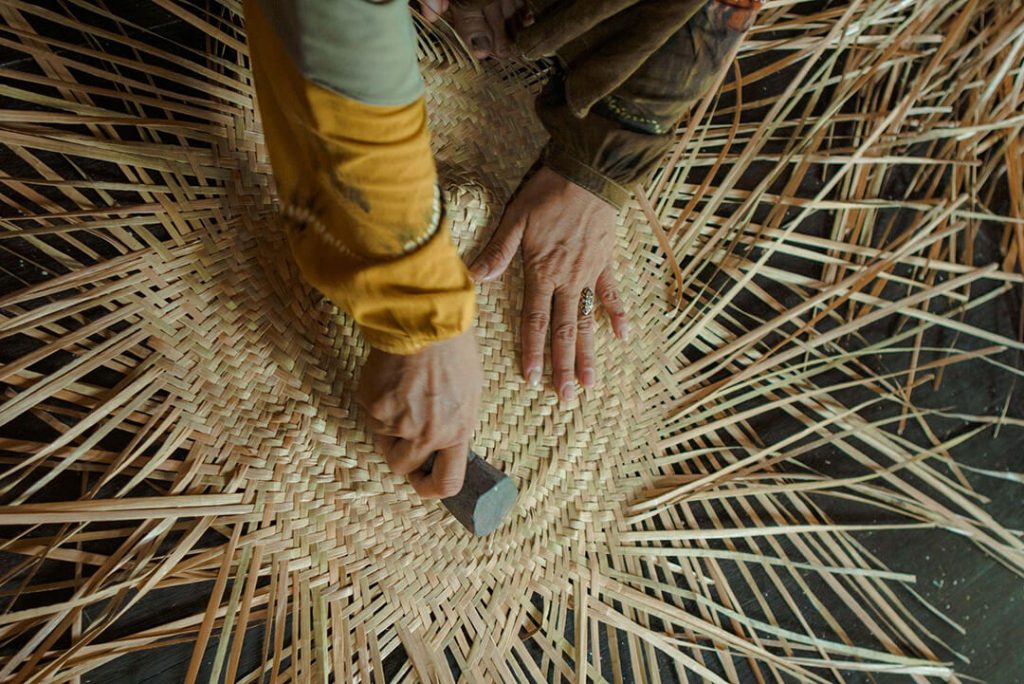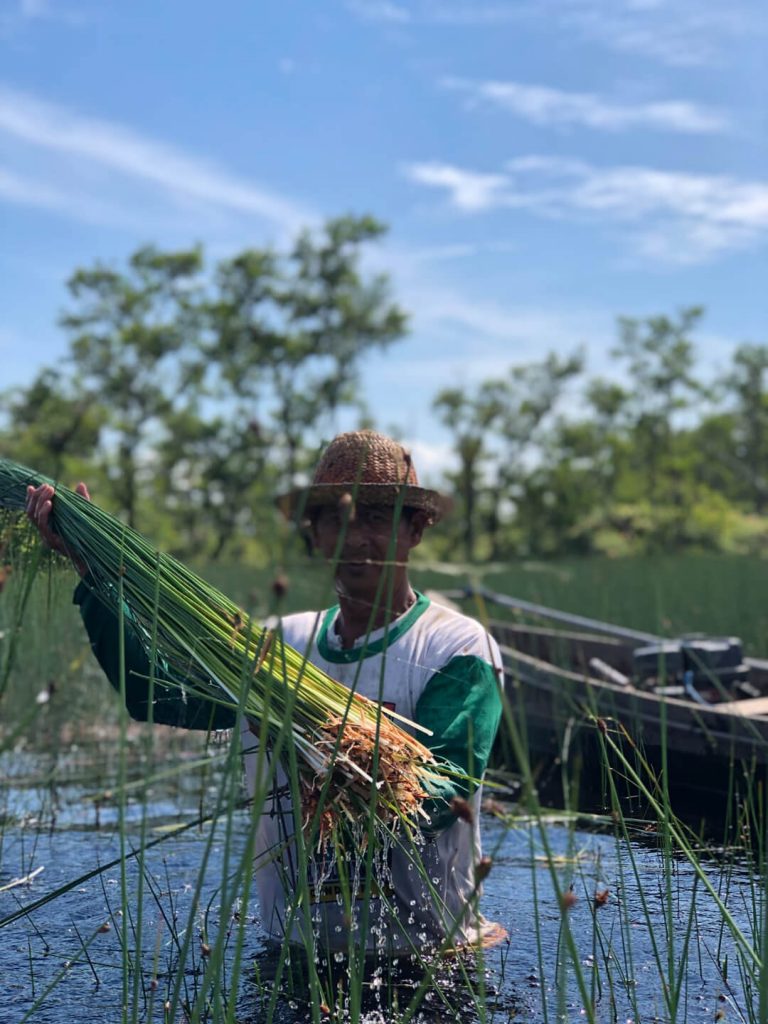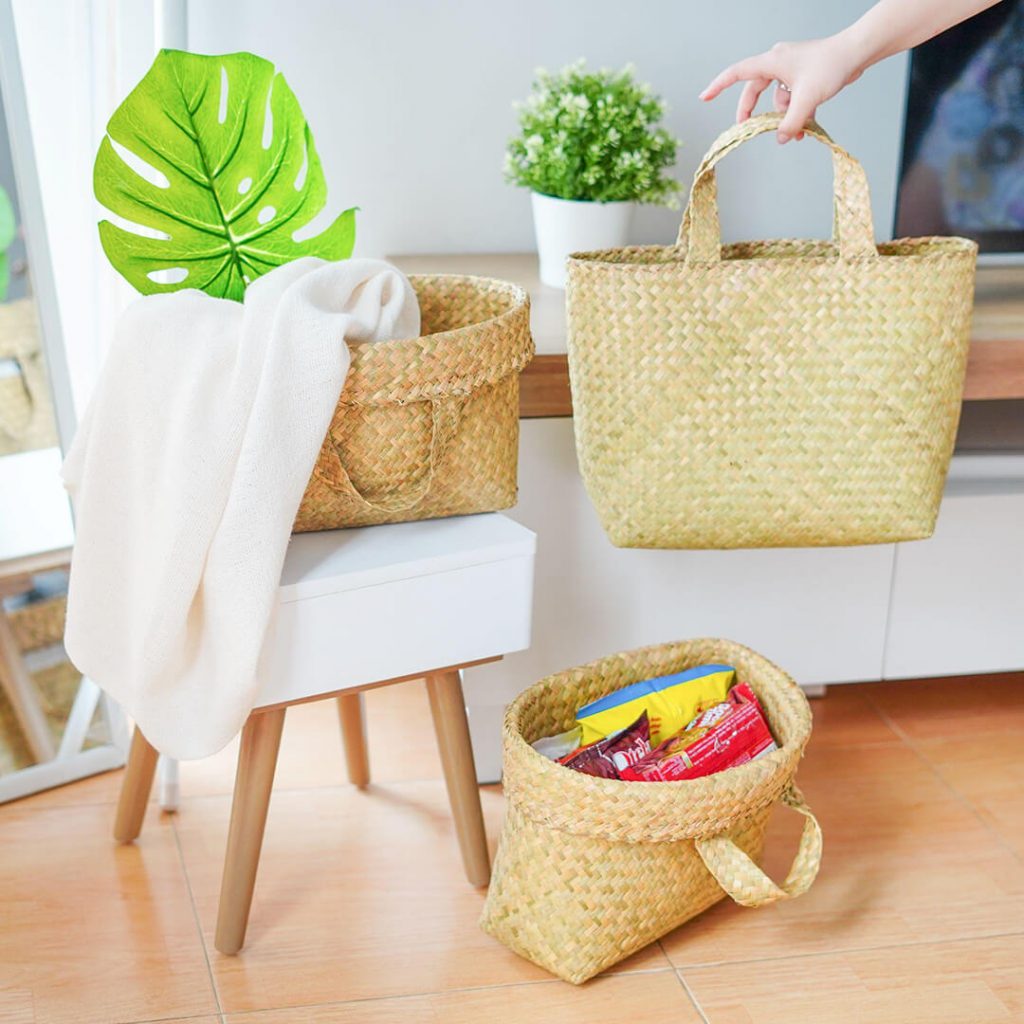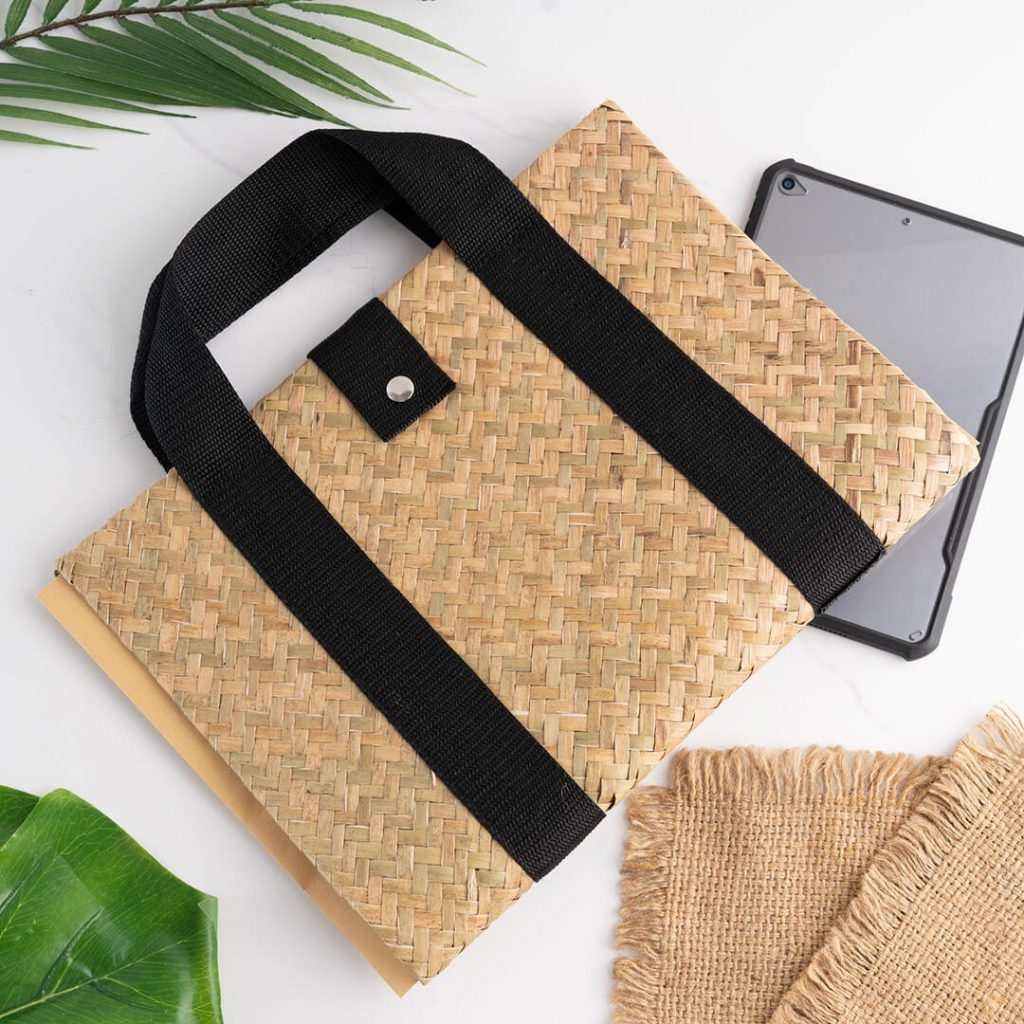One of the most important factors that businesses have to take into account in today’s world is sustainability. Whether it be considering how much a product reduce carbon emissions or what eco-friendly materials are used, all of these pieces are vital in moving towards a more environmentally sustainable future. Even without this heightened awareness and shift toward a more eco-friendly focus, Du Anyam has always been maintaining its environmental awareness and aimed to reduce carbon emissions, through leveraging locally sourced natural fibre materials, such as this material called Purun.

What is Purun?
Purun, an unassuming plant native to Indonesia, is one of the star materials used in Du Anyam’s acclaimed Purun collection. It is a grass-like plant endemic to peatlands, a type of wetland ecosystem. Known for its durability and natural abundance, we have been harvesting Purun in an eco-friendly manner for our woven goods.
Why is Purun important for the environment?
As mentioned before, Purun grows in a type of environment called a peatland, a marshy type of environment. Because of its unique environment, Purun can grow in abundance, meaning resource depletion is easily avoidable. Moreover, peatlands are important for a process known as carbon sequestration. In this process, peatlands absorb large amounts of carbon, preventing it from going into the atmosphere and ultimately helping slow climate change. Compared to other resources like palm trees, they conserve much more water. Finally, by maintaining the land, Du Anyam can preserve biodiversity in these areas, ultimately promoting environmental growth and regeneration.
Purun is a tool that needs to be used to combat climate change. Compared to other types of flora, purun and the peatland environments they grow in absorb a lot more carbon from the atmosphere, preventing high CO2 levels. As a result, preserving and even increasing purun growth can help to significantly reduce the levels of CO2 emissions, encouraging decreases in warming and other adverse impacts of climate change.
Purun is further better in comparison to other plants. For example, a huge commodity in Indonesia is palm trees, due to the tropical climate. Palm trees however are an important part of the palm oil industry, which harvests the trees through environmentally devastating deforestation methods that include burning down the forests. As a result, these methods of harvesting release a significant amount of carbon into the atmosphere, both carbon stored within the forests but also carbon released from burning down the trees. Purun on the other hand encourages environmentally-friendly harvesting due to its grass-like state, which prevents degradational methods that would be used in other harvests.
All in all, Purun is not just a regular plant. We chose it not only for its unique properties but also for the important environment that it comes to form, so we can help save the planet. Mitigating climate change and carbon emissions are global issues, but they get solved first with local solutions. Du Anyam is taking this initiative head-on through its efforts in utilizing the perfect resources to offset carbon emissions. Read more about Du Anyam’s Environment Impact here.
Ultimately, Purun is important in preserving the environment in the long term. Helping communities use Purun nearby to create economic benefits for them will in turn encourage them to preserve peatlands where Purun is grown. These types of cyclical benefits are needed in today’s economy, not only to empower and boost economic return but also to continue efforts to preserve the environment on a wider scale.
Supporting Purun products ultimately means supporting the livelihoods of Purun-based communities, encouraging them to continue to protect their Purun habitats to help the world as a whole strive towards a more environmentally-friendly and healthier future.






